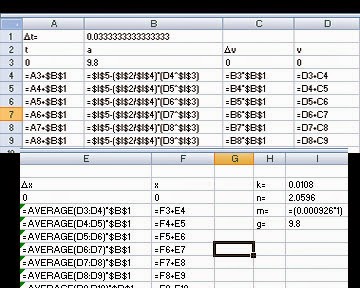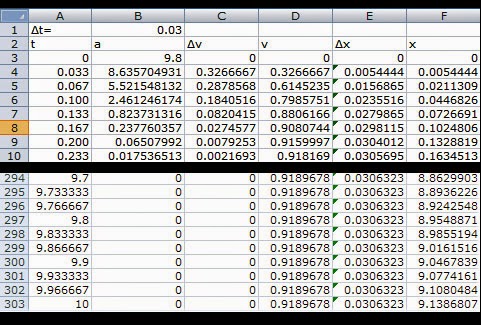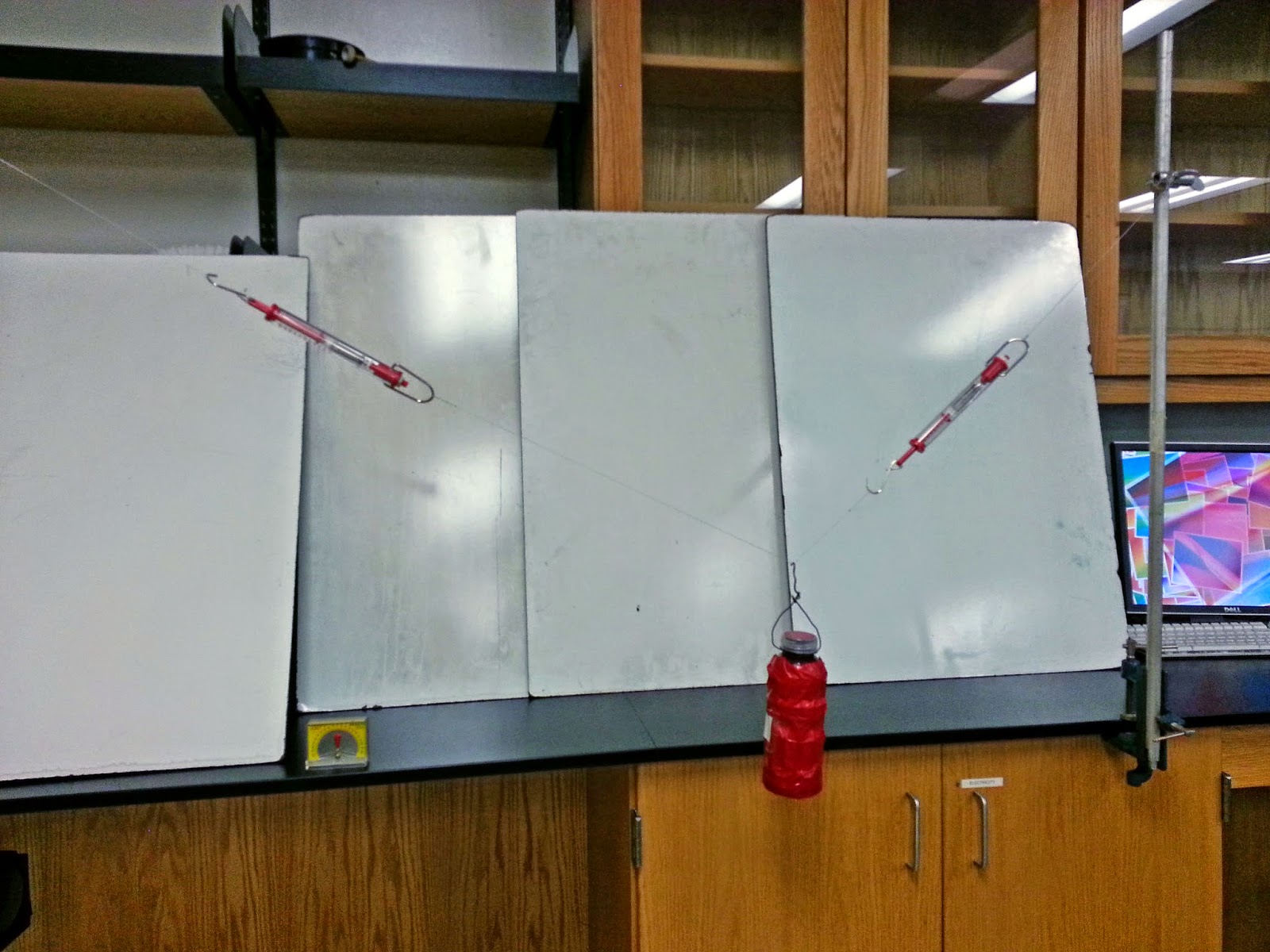Physics Lab #4: Started on 3/4/15
Propagated Uncertainty in Measurements
Annemarie Branks
Professor Wolf
Objective: Determine the amount of uncertainty in calculated measurements. The first part of the lab will determine the uncertainty for density (ρ) and the second part will determine the uncertainty for the mass of a hanging object.
PART 1:
Procedure:
1. With three metal cylinders, determine the measurements that will allow you to calculate their densities. The height and the diameter were determined by vernier calipers which have an uncertainty of ±0.01 cm. We then calculated for volume. V=π(d/2)^2*h
2. Measure the mass with a scale. Our scale had an uncertainty of ±0.1 g.
We can now calculate the density for each mass.
#1: ρ = 4.28 g/cm^3
#2: ρ = 2.89 g/cm^3
#3: ρ = 9.22 g/cm^3
3. Before we try to determine what kind of metals these are based on their densities, we must acknowledge that they may be error due to the inaccuracy in measuring. To find the uncertainty in density we must do calculations for each metal.
ρ = m/v = (4/π)*m/(d^2*h)
dρ = |∂ρ/∂m|dm + |∂ρ/∂d|dd + |∂ρ/∂h|dh
dρ = |4/(πd^2*h)|dm + |-8m/(πd^3*h)|dm + |-4m/(πd^2*h^2)|dh
4. With the equation above, we can determine the uncertainty of the metals' densities.
For #1: dρ = 0.00688 + 0.0446 + 0.00852 = ±0.0600 g/cm^3 (with three sig figs)
For #2: dρ = 0.0158 + 0.0459 + 0.00569 = ±0.06739 g/cm^3
For #3: dρ = 0.0163 + 0.148 + 0.0184 = ±0.1827 g/cm^3
5. Each metal now has a range of values for its density. If you were to compare the values to accepted values you might be able to guess what kind of metal they each are.
#1: ρ = 4.28 ±0.0600 g/cm^3
#2: ρ = 2.89 ±0.06739 g/cm^3
#3: ρ = 9.22 ±0.1827 g/cm^3
Results:
The first metal had a density that didn't exactly match up with anything but was close to Selenium, Titanium, and Yttrium.
The second metal, which we had guessed to be aluminum, does not include the density of aluminum in its range but came relatively close at 2.7 g/cm^3. Other metals that also came close are Boron, Carbon, Scandium, Silicon, and Strontium.
The third metal, which we had guessed to be copper, yet again did not include the accepted density within its range, but came close at 8.92 g/cm^3. Erbium was the only element whose accepted density fell within our range but it was most likely not erbium because erbium doesn't have that bronze-like color. Other metals that came close to our range included Cobalt and Nickle.
Errors:
Possibilities for not being able to identify the substance
- The metals could have been alloys and I only compared their densities to pure substances.
- The metals could have slightly oxidized thus increasing their masses which would have increased the density.
- The metal cylinders may have not been made properly, meaning they could have tiny air pockets inside them that would decrease their density.
Link to the site I used that lists densities: http://periodictable.com/Properties/A/Density.al.html
PART 2:
Procedure:
1. Professor Wolf set up hanging masses with spring scales. To begin determining the mass of the object we must record the forces pulling on the object.

The top picture were going to call unknown mass 1 and the bottom unknown mass 2. From the spring scales we read the tension in the string. We also used a device that allowed us to find the degree of the string above the horizontal. The springs had an error of +/- 0.5 Newtons and the degree measuring device had an error of +/- 2° which is +/- 0.034906585 radians. Below is a picture of the device.
Here are the measurements we got for two of the hanging masses:
2. Determine the masses by calculating the forces in the y direction. We don't really care about what is happening in the x direction but it will let u know if your measurements are too inaccurate.
For unknown mass 1:
4.8*sin(26°)+6.4*sin(46°)=m1g
m1=6.708/g
m1=0.684 kg
For unknown mass 2:
10.7*sin(48°)+7.2*sin(11°)=m2g
m2=9.325/g
m2=0.951 kg
3. Just as we did for Part 1, we have to determine the rage of uncertainty for each mass.
m = (F1*sinθ1 + F2*sinθ2)/g
dm = |∂m/∂F1|dF1 + |∂m/∂F2|dF2 + |∂m/∂θ1|dθ1 + |∂m/∂θ2|dθ2
dm = [|sinθ1|dF1 + |sinθ2|dF2 + |F1cosθ1|dθ1 + |F2cosθ2|dθ2]/g
For unknown mass 1:
dm = [|sin26°|0.5 + |sin46°|0.5 + |4.8*cos26°|0.0349 + |6.4cos46°|0.0349]/g
dm = 0.0901712891 kg
For unknown mass 2:
dm = [|sin48°|0.5 + |sin11°|0.5 + |10.7*cos48°|0.0349 + |7.2cos11°|0.0349]/g
dm = 0.098216 kg
Result:
For unknown mass 1: m = 0.684 +/- 0.0902 kg
For unknown mass 2: m = 0.951 +/- 0.0982 kg
What we learned:
This experiment showed that though we take our measurements as best as we can, there is a certain amount that we are unsure of in each measurement. We can calculate how uncertain we are and then find a range of values that should contain the actual value we are looking for.
































